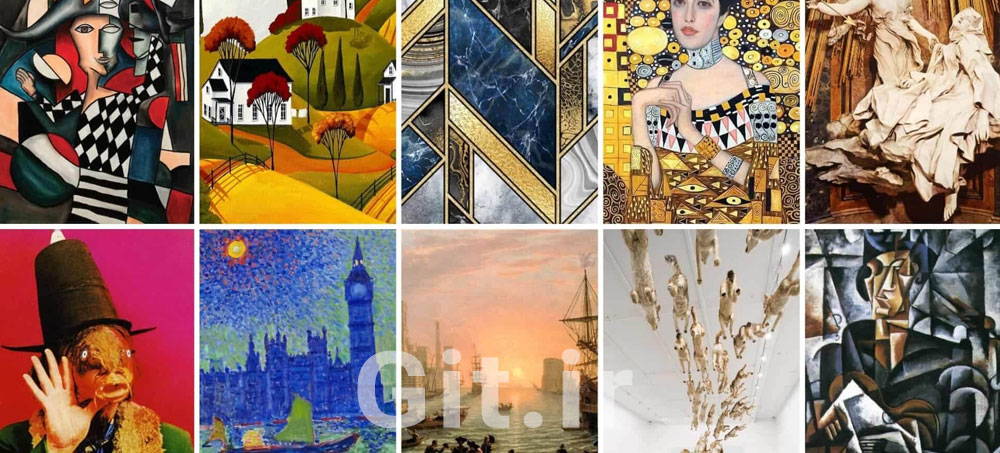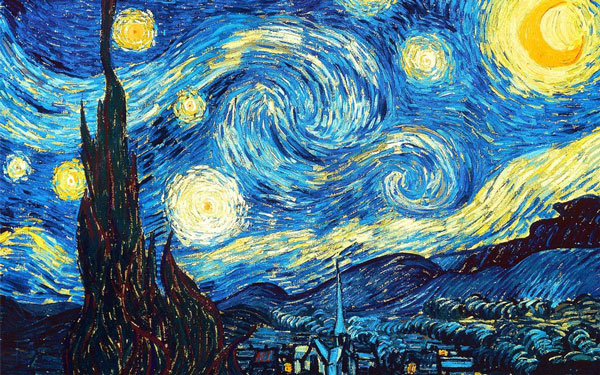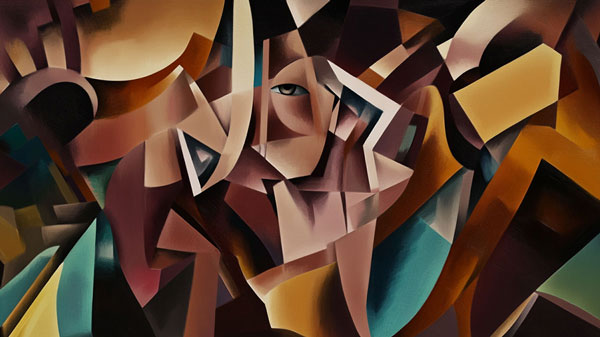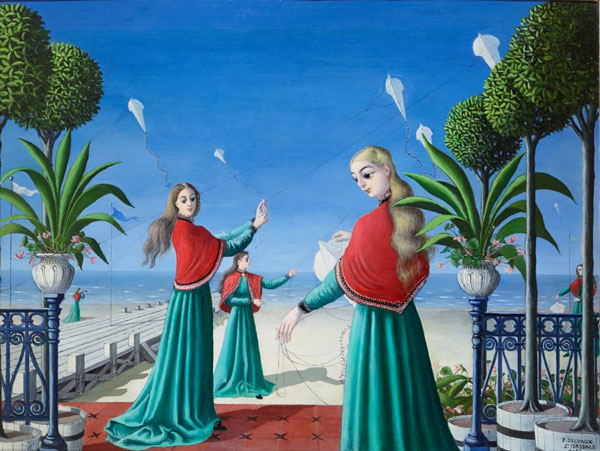Understanding Main Painting Styles

Why Should We Know Painting Styles?
Art, especially painting, is a universal language for expressing the deepest thoughts, feelings, and human concerns. Understanding different artistic styles is not just about memorizing names and dates; it's a key to opening a window to the evolution of human creativity and the diverse ways artists throughout history have chosen to interact with the world around them. Each style is a mirror of its era, philosophy, and the perspectives of its creators. This article is a guided and accessible journey through the most influential painting movements, familiarizing you with the fundamental ideas and techniques of each. Let's begin this article with styles that fixed their gaze on the real world.
1.0 Representing the World: Styles Focused on Reality and Ideals
The first group of styles we will examine, despite their differences, all share one common point: dialogue with the observable world. These movements, whether through direct imitation, emotional idealism, or historical grandeur, always had an eye on the external reality and sought to recreate it in a unique way on the canvas.
1.1 Realism: A Mirror to Nature The main philosophy of Realism is based on the accurate and true depiction of objects, nature, and humans. Artists of this style strive to portray everything exactly as it appears in reality, without any idealization or artifice. This approach, which reflected the world without mediation and with complete honesty, was a radical break from the idealistic and romantic subjects that had dominated academic art before it. Works by artists like Gustave Courbet are outstanding examples of this effort to capture pure reality.
1.2 Baroque: Grandeur, Movement, and Powerful Emotions The Baroque style is known for its abundance of details, strong sense of movement, and powerful emotions. This movement, often used to depict religious, historical, and mythological scenes, focused on creating excitement and a deep impact on the viewer. One of the key features of Baroque is the masterful play of light and shadow to add depth and drama to the scene. Works by Caravaggio well demonstrate this dynamism and emotional richness.
1.3 Neoclassicism: Return to Classical Order and Dignity Neoclassicism, as its name suggests, was a return to the art of ancient Greece and Rome. This style, emphasizing symmetrical forms, precise lines, and clarity in composition, sought to revive the order, logic, and grandeur of that era. The subjects of Neoclassical paintings were often historical and moral, aiming to inspire civic virtues. Works by Jacques-Louis David are quintessential representatives of this style.
1.4 Romanticism: Outpouring of Emotion and the Beauty of Nature In contrast to the order and logic of Neoclassicism, Romanticism focused on depicting deep emotions, imagination, and the beauty of nature. Artists of this style prioritized inner passions and personal feelings above all else, viewing nature not only as a beautiful landscape but as a source of spiritual inspiration and an embodiment of emotions. Works by William Turner are a brilliant example of this emotional and passionate approach.
These reality-based foundational styles paved the way for a greater revolution that forever changed our understanding of the world.

2.0 Revolution in Perspective: Styles That Transformed Our Understanding of Light and Color
This chapter in art history is a key turning point; an era when artists moved away from precise representation of reality and toward capturing subjective experiences, fleeting light effects, and the emotional power of color. These movements revolutionized our view of painting and paved the way for more personal expressions.
2.1 Impressionism: Capturing a Fleeting Moment Impressionism sought to capture a specific moment of nature or everyday life with all its atmosphere. The main characteristic of this style is the use of short, quick brushstrokes and playing with light and color. Impressionist painters, more than adhering to the objective reality of a landscape, emphasized light effects and their personal feelings in that moment. Works by Claude Monet embody this complete effort to depict brilliant and transient impressions.
2.2 Post-Impressionism: Beyond a Single Moment Post-Impressionism was a continuation of Impressionism but with greater emphasis on structure, form, and color. Artists of this style, while maintaining an interest in bright colors, placed more importance on personal emotions and inner states, seeking a deeper and more personal expression. They moved beyond momentary capture to reach the emotional essence of the subject. Works by Vincent van Gogh are a prominent example of this inner exploration and powerful expression.
2.3 Divisionism or Pointillism: Images Built from Color Dots This style was based on a unique scientific and artistic technique. Artists, instead of mixing colors on the palette, placed small, separate colored dots next to each other on the canvas. These dots blend together in the viewer's eye from a distance, creating a unified and brilliant image. Works by Georges Seurat are the best example of this precise and scientific approach to color.
2.4 Fauvism: Explosion of Bold Colors Fauvism sparked a revolution in color use with its bold application of bright, intense colors and simplified forms. Fauvists believed that color should directly express emotions and had no obligation to resemble reality. They freed color from its descriptive role and turned it into a tool for expressing pure emotions. Works by Henri Matisse symbolize this liberation and expressive power of color.
Exploring light and color opened the way for completely breaking form and immersing in the world of mind and psyche.

3.0 Breaking Boundaries: Styles Exploring Form, Mind, and the Unconscious
The movements discussed in this section took a bolder step away from visual reality. These styles boldly entered realms of abstract geometry, deep psychological expression, and dreamlike landscapes, forever transforming the definition of art.
3.1 Cubism: Reality from Multiple Angles Cubism created a revolution in depicting space and form by breaking down objects into simple geometric shapes. Artists of this style depicted their subjects from multiple angles simultaneously, thus challenging the traditional understanding of perspective. This style, developed by Pablo Picasso and Georges Braque, forced the viewer to see an object not from one point but from all possible aspects. Picasso's famous work "Les Demoiselles d'Avignon" is a turning point in the history of this movement.
3.2 Expressionism: The Scream of Inner Emotions Expressionism focuses on conveying the intense emotions and feelings of the artist. In this style, reality is depicted in an exaggerated and redefined way to scream out inner turmoil and passions. Expressionists, using intense colors and strange, sometimes distorted forms, displayed their inner world without any censorship. Works by Edvard Munch well show this effort to depict human anxiety and emotions.
3.3 Surrealism: A Journey to the World of Dreams and the Unconscious Surrealism, focusing on combining dreams and reality, creates illogical and bizarre scenes. Surrealist artists, inspired by psychoanalytic theories, sought to depict the unconscious mind and present a world where everyday logic does not reign. Works by Salvador Dalí, with their hallucinatory images and impossible combinations, are a complete example of this journey into the depths of the mind.
3.4 Abstract Art: Art Freed from Reality Abstract or non-representational art completely severs its direct connection to observable reality. This style focuses on forms, colors, and patterns, attempting to depict emotions or ideas through unreal and pure compositions. Here, color and form become the main subjects of the artwork. Works by Wassily Kandinsky were pioneers in this path toward pure artistic expression free from the material world.
These introspective and structure-breaking styles laid the groundwork for movements that directly engaged with contemporary society and culture.

4.0 Echoes of the Contemporary Era: Styles Borrowed from Pop Culture and Modern Philosophies
The final group of styles we examine reflect the concerns of the modern and contemporary era. These movements, from consumer culture and media to philosophical explorations of the magic hidden in everyday life and the power of simplicity, all echo their time.
4.1 Pop Art: Art in Everyday Life Pop Art, inspired by elements of popular culture like advertisements, comic books, and everyday objects, linked art to ordinary people's lives. This style was a reaction to consumer and media culture, highlighting commonplace images and blurring the boundary between "high" art and "popular" culture. By granting artistic status to everyday objects, this movement challenged traditional concepts of artistic value and forced the art world to confront the reality of a new society dominated by mass media. Works by Andy Warhol are iconic symbols of this movement.
4.2 Magical Realism: Wonder in the Heart of Reality Magical Realism is an intelligent blend of reality and magical or strange elements. In this style, completely ordinary and realistic scenes are accompanied by bizarre and unconventional elements, such that wonder and illusion become an inseparable part of everyday reality. This style blurs the boundary between the possible and the impossible. Works by Frida Kahlo are an example of this poetic and enigmatic fusion.
4.3 Minimalism: The Power of Simplicity and Pure Form Minimalism emphasizes pure simplicity, using basic forms, clean lines, and limited colors. The goal of this style is to minimize details and eliminate any superfluous element to display the pure and essential form of objects. Minimalism invites the viewer to focus on the essence of a work, namely shape, color, and space. Works by Frank Stella well demonstrate this search for absolute simplicity and purity.
In this way, these contemporary movements display art's ceaseless dialogue with society and find deep meaning in pop culture, everyday magic, and the power of pure form.
Conclusion: The Endless Scope of Artistic Expression
In this short journey, we traversed various paths in the vast landscape of painting; from the effort for flawless representation of reality in Realism to complete liberation from it in Abstract Art. We saw how each style opens a unique window to human experience, culture, and the philosophy of its era. These movements are not just a collection of techniques but different ways of seeing, feeling, and thinking about the world. Now, we encourage you to continue this exploration on your own and see which of these artistic worlds resonates most with your spirit and gaze.
✅ To learn more about various painting techniques and styles, you can visit the following sections: